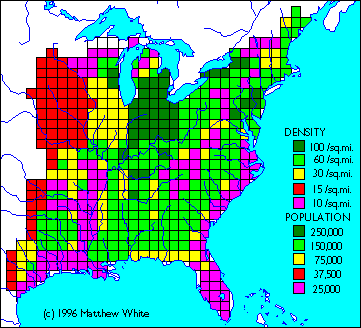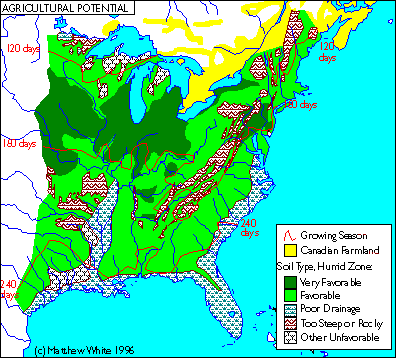Is this map posted by Winner in the first post supposed to show the Medieval state-building processes? In such case, I am not sure why its author is counting offshoots of some states, as separate states - why so many circles in France and Germany, considering that all of them were just offshoots of the Frankish Empire? Many of Italian states were also offshots. Venice was a late offshot of the Eastern Roman Empire, which gained independence from the original founder and established its own state. Duchy of Western Pomerania was an offshot of Poland (Poland expanded into tribes of Western Pomerania, bringing state administration and state organization to that area - later Polish governors became independent and established their own dynasty there). Etc., etc.
Most of Christian states in Northern Iberian Peninsula, were also just offshoots of either the Visigothic Kingdom or the Basque states. Precisely - offshoots of remnants of those states, which survived the Muslim conquest in remote northern regions. Thus I completely do not agree with such a large number of circles in the Iberian Peninsula. Why there are no circles in some areas where states indeed were formed - for example the Balkans, Scotland, Ireland?
Why there is a circle in Brittany, but not in Normandy?
The Duchy of Normandy can be considered in some way a new state, rather than a Frankish offshoot. But Brittany?
There shouldn't be a separate circle in what is now Slovakia. But in Moravia (Great Moravia) and in Bohemia (Czechs' state). In the Balkans a large number of Medieval states was established - Carantania (now Slovenia), Croatia, Serbia, Bulgaria, etc. Some of them lost independence very quickly (Carantania) but it doesn't change the fact, that the state-building processes took place there, as those states were not offshoots of previously existing states.
In territory of modern Poland, according to some historians, there was not 1 but 2 Early Medieval states - the Polans' state and the Vistulans' state.
The Vistulans' state (with the capital city in Cracow) was conquered by the Moravians' state, later regained independence, later was conquered by the Czechs' state, and finally became part of the Polans' state. But it can be marked as a separate circle, since the state-building process took place.
BTW - while France and Germany are clearly Frankish offshoots (West Francia, East Francia), the issue of Northern Italy is more complicated.
================================
So below is how I see this (without Balkans and Italy so far, because these two regions are quite a complicated mess). We can see the Frankish state and its expansion, Irish kingdoms, Anglo-Saxon kingdoms, Scotland, Wales, Normandy, Scandinavian states, Kievan Rus, Polabian Slavs (they created maybe not unified states, but strong chiefdoms / tribal confederations with many large urban settlements), Visigothic / Basque entities in Northern Iberia (pushed back there by the Muslim Invasion), Kievan Rus, Czechia, Moravia, Carantania, Polans' state, Vistulans' state, Lithuania (but it emerged in the 13th century), etc.
I forgot to add the Teutonic Order's state in Prussia (13th century) and the Livonian Order's state in Livonia (13th century), which later merged:





 Justinian didn't seem interested in going north of the Danube either, although he was obviously very keen to encircle all of the med sea as a Byzantine pond (and of course it was not viable in the long-run or even short-run).
Justinian didn't seem interested in going north of the Danube either, although he was obviously very keen to encircle all of the med sea as a Byzantine pond (and of course it was not viable in the long-run or even short-run).





 )
)


